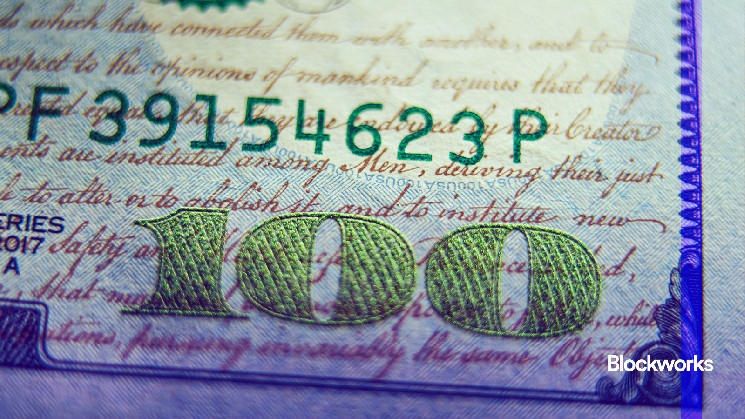ORE’s developer hopes their seed round will reverse the currency’s fortunes
 blockworks.co 13 September 2024 18:40, UTC
blockworks.co 13 September 2024 18:40, UTC Today, enjoy the Lightspeed newsletter on Blockworks.co. Tomorrow, get the news delivered directly to your inbox. Subscribe to the Lightspeed newsletter.
Regolith Labs, the software company that spun out of the viral ORE project, has raised $3 million in seed funding, it told Lightspeed exclusively.
Foundation Capital led the round, which also drew participation from Colosseum, Solana Ventures, B+J Studios, Third Kind Ventures and Dead King Ventures. With the fresh funds, the three-person startup will aim to expand its experimental proof-of-work currency while also building a PoW token distribution platform.
Interestingly, Regolith investors did not receive any ORE tokens due to the project’s fair launch, anti-pre mine ethos. Tokens — which crypto venture investors tend to favor for their shorter lockup periods and guarantee of a return regardless of whether a company pulls off an IPO — were not entirely absent from the round however: Investors received equity and warrants for a theoretical future token Regolith Labs could launch, perhaps in connection with its token distribution platform. This platform could use proof-of-work to help token airdrops fend off sybil attacks and spam, something that’s done for Tor’s Onion browser, for instance.
For now though, Regolith is turning its attention to ORE, which is a Solana-based currency that users can “mine” through proof-of-work (though it doesn’t have the security properties of Bitcoin, I should note). The project began as part of a Colosseum hackathon earlier this year, and speculation-driven mining caused congestion on Solana until ORE eventually paused operations for months.
As a side note, ORE’s origin story has come somewhat full circle: After being crowned grand champion of Colosseum’s first hackathon, Hardhat Chad has become a judge of the second one, and ORE has a “sidetrack” for developers building in its ecosystem.
The much-hyped ORE v2 went live in early August, but a lack of compelling reasons to hold the token caused some pretty brutal price action: ORE’s price peaked at roughly $1,200 on July 29. Today, it’s trading at around $63. Regolith Labs is looking to reverse those fortunes.
ORE’s founder Hardhat Chad (anonymous, in a subtle homage to Bitcoin’s Satoshi Nakamoto) called the price slide “unfortunate” though “maybe somewhat expected” and said the project is seeking to expand its distribution in the short term by building out a mobile wallet with ORE mining baked directly inside. Today, users who want to mine ORE on their phones, for example, have to do so through the mobile browser on the Backpack wallet app, which leads to a somewhat clunky UX. ORE is hoping to hire more developers, one of whom would be a mobile dev, Hardhat Chad told me.
With ORE’s price sliding so dramatically, more-sophisticated miners are also winding down operations, Hardhat Chad said. At the same time, community-built mining pools have sprung up recently. The pools combine computing power from laptops and phones to mine ORE and pay out reward shares to participants. Hardhat Chad thinks that pools are more sustainable long-term, since fees are divided up, and there’s a lower opportunity cost mining ORE on a laptop than with an ASIC that could be mining other assets.
I asked Hardhat Chad about ORE’s ability to maintain mindshare when it’s not actively bludgeoning the Solana network. The developer said ORE is shifting its focus to “long-term value” instead of “marketing stunts.”
Part of this looks like deepening ORE’s liquidity in things like stablecoins, tokenized commodities, and DePIN tokens.
“This is how we make ORE ‘money,’ it needs to be readily exchangeable for real world things,” Hardhat Chad said.




